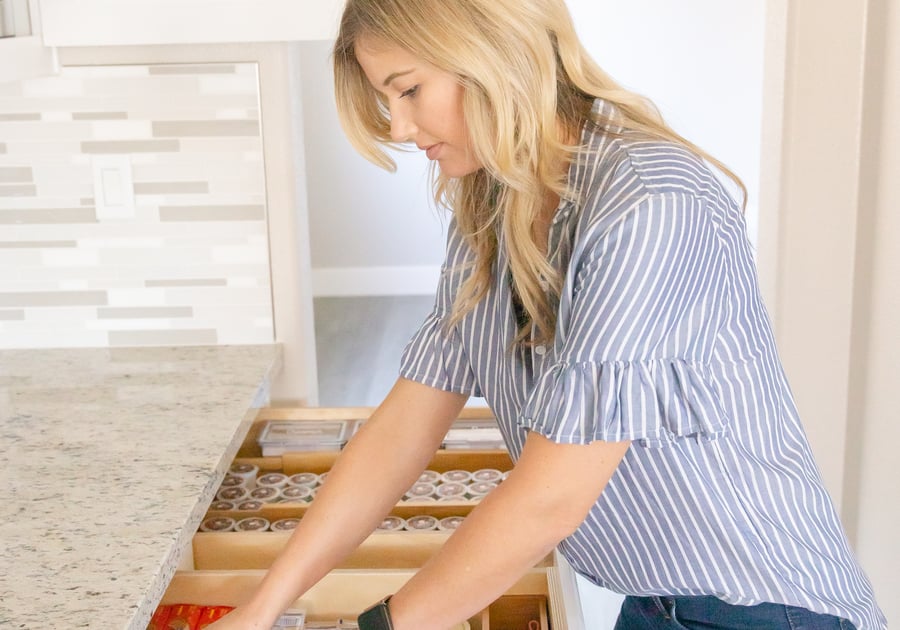 |  |
As a professional organizer, every day I witness the transformative impact that organization can have on families. With National Get Organized Day on April 26th, it's the perfect time to delve into why living in an organized environment is crucial for mental health, physical well-being, and productivity, especially for busy moms and families.
In the whirlwind of parenthood, it's easy to overlook the chaos that can accumulate around us. From scattered toys to piles of paperwork, and never ending piles of laundry, the clutter seems to be magnetic, attracting more clutter and multiplying overnight. But wha t many don't realize is that this disorder isn't just an inconvenience or a matter of aesthetics—it can deeply affect our psyche and that of our children.
Picture this: a cluttered living space, where finding a missing sock feels like a Herculean task and every corner seems to hide another forgotten item. In such an environment, stress becomes a constant companion, draining our energy and clouding our minds. For moms, already juggling countless responsibilities, this added burden can feel overwhelming.
Imagine walking into a home where every item has its place, where finding what you need is effortless, and where peace and tranquility reign. In such an environment, stress melts away, and productivity soars. For busy moms, this level of organization isn't just a dream—it's an attainable reality with the right approach.
First and foremost, let's address the mental health benefits of organization. Studies have shown a clear link between clutter and increased levels of cortisol, the stress hormone. Living in a chaotic environment can elevate stress levels, leading to anxiety, irritability, and even depression. And when moms are stressed, it inevitably affects the entire family dynamic. By creating an organized environment, moms can cultivate a sense of calm and control, laying the foundation for a happier, more balanced life.
But the benefits don't stop there. A clutter-free home is also a safer home, reducing the risk of accidents and injuries, especially for young children. Dust and allergens thrive in unkempt spaces, posing risks to respiratory health, especially for children. Additionally, by streamlining our surroundings, we free up valuable time and energy that can be better spent on meaningful activities with our loved ones.
But perhaps the most compelling reason to embrace organization is its profound impact on productivity. A cluttered space is a breeding ground for distraction, making it difficult to focus on important tasks. Time spent searching for misplaced items could be better utilized engaging with family or pursuing personal interests. By streamlining our surroundings, we create space for creativity to flourish and productivity to soar.
Importantly, organization is not a one-time activity but an intentional practice woven into the fabric of daily life. It's about establishing routines and systems that support a harmonious household. From designated storage solutions to daily tidying rituals, every effort contributes to maintaining order and peace of mind.
And let's not overlook the influence of parental modeling. Children learn by example, and when they see their parents prioritizing organization, they are more likely to adopt these habits themselves. By instilling a respect for order from a young age, parents can set their children up for success in all aspects of life.
Now, let's delve into the practical steps of organization, following a simple 5-step guide:
- 1.Take it all out: Begin by emptying the space you wish to organize. Whether it's a closet, a pantry, or a playroom, removing everything allows you to start with a clean slate.
- 2. Sort and categorize your items: Divide your belongings into categories based on their purpose or use. This step is crucial for gaining clarity and identifying items that may no longer serve a purpose.
- 3. Decide what needs to be discarded or donated: Be ruthless in your decision-making. Ask yourself if each item is truly necessary or if it simply adds to the clutter. Consider donating gently used items to those in need and disposing of anything that is broken or no longer usable.
- 4. Establish the home for a category of items: Now that you have decluttered, it’s time to organize what remains. Place the remaining items in a strategic fashion for easiest retrieval and put away.Utilize storage solutions such as bins, baskets, and shelves to keep similar items together and easily accessible.
- 5. Add labels: Labels are essential for ensuring that everything has a designated home and can be easily found when needed. When you add a label it truly establishes the home of that item. Furthermore, it helps to keep the system maintained because our brains won’t allow us to place coloring books in a bin marked “crayons”.
By following these steps and embracing the principles of organization, busy moms and families can create a harmonious living environment that fosters well-being, productivity, and peace of mind. With National Get Organized Day here, let it serve as a catalyst for positive change in your home. Embrace this opportunity to declutter your space, declutter your mind, and set the stage for a happier, healthier family life. Remember, it's not just about tidying up—it's about reclaiming control, restoring balance, and nurturing a sanctuary where love and laughter can thrive.
As National Get Organized Day approaches, let it serve as a reminder of the transformative power of organization. Embrace this opportunity to declutter your space, declutter your mind, and set the stage for a happier, healthier family life. Remember, it's not just about tidying up—it's about reclaiming control, restoring balance, and nurturing a sanctuary where love and laughter can thrive.



